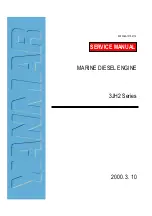
5
EN
4.
Testing
Testing is the most important aspect of the installation procedure.
Each single component, such as the gearmotor, emergency stop,
photocells, etc., may require a specific testing procedure.
We recommend that you follow the directions provided in the relevant
instructions manuals.
Testing of the entire automation system must be conducted by expe-
rienced and qualified personnel, who must establish what tests are
necessary depending on the risks involved.
To test RING proceed as follows:
• Make sure that the fusible elements are in good condition, i.e. that
there are no breakages.
• Make sure that the gearmotor is securely fastened to the spring
shaft.
• Make sure that the screw connections have been well tightened.
• Make sure that the electrical contacts are in good condition.
• Make sure that the axial slack of the ring nut is not excessive.
• Check the adjustment of the limit switches by carrying out a com-
plete manoeuvre (up-down).
• Make sure that when the gearmotor is locked at any point, it dis-
plays no tendency to move.
• Make sure that the release device easily disengages the rolling
gate’s gearmotor (only on versions with brake).
5.
Maintenance and Disposal
This chapter provides information about how to draw up a mainte-
nance schedule, and the disposal of RING.
5.1 -
Maintenance
The automation must be subjected to maintenance work on a regular
basis in order to guarantee it lasts.
The maintenance operations must be performed in strict compli-
ance with the safety directions provided in this manual and according
to the applicable legislation and standards.
If any other devices are present, follow the directions provided in their
maintenance schedules.
01.
RING requires scheduled maintenance work within at least within
6 months or 30,000 manoeuvres (max.) from the previous main-
tenance.
02.
Disconnect the power supply.
03.
Check for any deterioration in automation system components,
paying special attention to erosion or oxidation of the structural
parts. Replace any parts which are below the required standard.
04.
Check the wear and tear on the moving parts: pinion, rack and
the gate components; if necessary replace them.
05.
Reconnect the power supply.
6.
Disposal of the product
This product is an integral part of the automation and must be
scrapped with it.
At the end of the product’s service life, it must be scrapped by quali-
fied staff.
This product is made up of a variety of materials, some of which can
be recycled while others must be disposed of. Check that regulatory
recycling and scrapping facilities are available locally.
Caution!
– some parts of the product may contain polluting or haz-
ardous substances which, if dumped into the environment constitute
serious environmental and health risks.
As indicated by the symbol the product may not be disposed of as
domestic waste.
Sort the materials for disposal according to the meth-
ods envisaged by current local legislation; or return the
product to the retailer when purchasing a new one.
Caution!
– local legislation may envisage serious fines
in the event of abusive disposal of this product.
Summary of Contents for RING 180 PLUS
Page 2: ......
Page 6: ...4 IT 7 15 11 18 21 8 16 12 22 9 17 13 19 23 10 14 20 24...
Page 14: ...4 EN 7 15 11 18 21 8 16 12 22 9 17 13 19 23 10 14 20 24...
Page 22: ...4 FR 7 15 11 18 21 8 16 12 22 9 17 13 19 23 10 14 20 24...
Page 30: ...4 ES 7 15 11 18 21 8 16 12 22 9 17 13 19 23 10 14 20 24...
Page 35: ......
















































